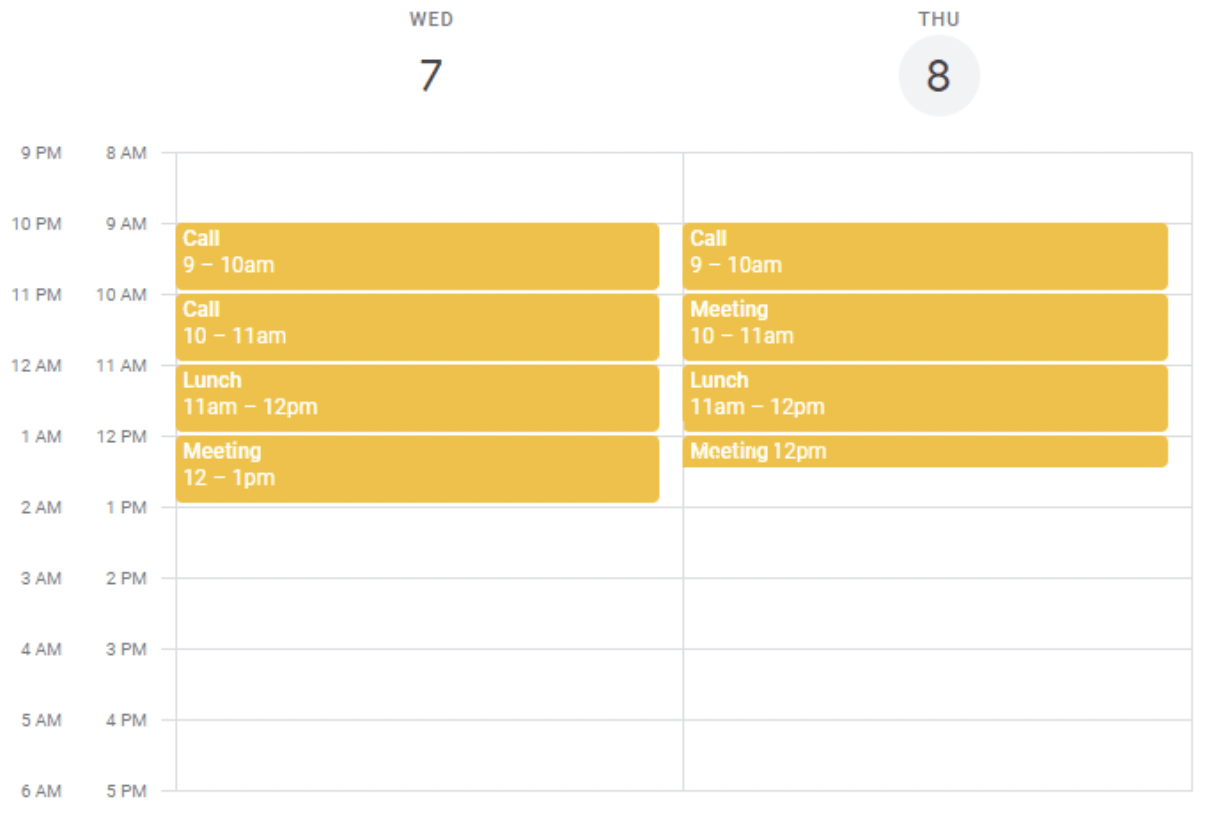How we spend our days is of course how we spend our lives. (Annie Dillard)
I learned long ago that the little recurring things add up and this time is expensive. The commute, the morning schedule, what meals you eat, how much you sleep. Over the course of a day, these things appear insignificant. Over a lifetime, it’s astonishing. In aggregate, it’s weeks, sometimes years. When accumulated over a society, we boil away millions of person-years every year.
For business, it’s dollars. It’s your competitive advantage. It’s market share. For individuals, it’s the energy you could have committed toward the things you love doing; things that make life worth living.
18 minutes == 1 year
For a business to create profit it has two options. It can grow revenue or cut costs. You can’t grow more time, you can only cut its costs. Let’s do a toy calculation to find out how much time you’d need to save per day to create an extra year in your life.
If you assume that the average person lives 80 years, an 80th of a day is 18 minutes. In other words, if it takes you 18 minutes to eat breakfast, over a lifetime, you’ll have spent a year eating breakfast.
This means that saving 18 minutes every day adds an extra year to your life. This is a year to do what you want with it. Sleep, vacation, create, work, relax, learn, game. I’m not here to tell you your priorities, I just desire you live a life of intentionality.
This year isn’t paid out at the end of your life, it’s not an extra year of retirement. This time is paid out over the course of it, every single day. Like an investment, the value you create during those 18 minutes has the opportunity to compound.
Where do I get an extra 18 minutes from?
Recovering 18 minutes a day (even multiple times a day) is easier than you might expect. The key resides within the organization of your calendar. Before we even consider adding or removing things from your calendar, your time could become substantially more effective by simply rearranging your calendar.
Notice the following calendar:

Notice the half hour blocks for unstructured work. Moving between structured and unstructured time can create the phenomenon known as context switching. A number of studies done that suggest that switching contexts creates significant downtime. Most suggest that each time you switch contexts it costs as much as 20 minutes. One way to recover 18 minutes of your day is to eliminate one of your context switches.
Consider this updated version of the calendar:

We’ve eliminated 3 context switching opportunities! If your calendar looks like the first one, you could recover around 3 years of your life just by compressing your calendar. If you move the meetings and calls on the second day to the first day, you can recover another full context switch over 2 days (an additional 1/2 year).
Obviously if you can shorten or eliminate any of these obligations you’ll create substantially more time. But to create a year, you’ll have to do it repeatedly.
I like eliminating context switching because it requires almost no work and can immediately recover tons of time. The next easiest context switching event to fix is notifications. Once you recognize the principles and internalize the cost of context switching, you’ll find all kinds of places to recover your life.
Ideas
1.Start thinking about those 18 minutes as a year. You’ll be more vigilant about recovering time lost to the ether. Commit some time to thinking about where to recover time.
2. Block together all your structured time. The larger your blocks of contiguous time the better. Every time you switch from structured to unstructured costs you 20 minutes. If you make your first structured meeting at the beginning of the day, it’s possible to only context switch once.
3. Have a dedicated meeting day (or two) If your entire day consists of structured time, there will be no context switching for that day. Likewise for unstructured time. Have dedicated meeting days and work days.
4. Eliminate unnecessary meetings. Create process for when a meeting should be an email. Eliminate meetings that are not addressing your highest priority problems. Recovering two hours per week is the same as recovering 18 minutes per day.
5. Turn off your notifications. Notifications creates the opportunity for context switching. Turn off your phone and chat and create an “emergencies only” process for reaching you when you’re offline.
6. Fully leverage meetings with Meetings.io Have one dedicated weekly meeting to address your most crucial problems instead of creating a one-off meeting for each problem. Decide the best course of action to completely solve the problem and capture them as to-dos. If you’re taking the right to-dos and your team completes these to-dos, then the problem goes away forever. How much recurring time would you save by never having to think about your biggest problem again? How much time does your team save?
Bonus, I’ve included an HTML/Javascript calculator (download and open the html file to run)
Written by
Clay

